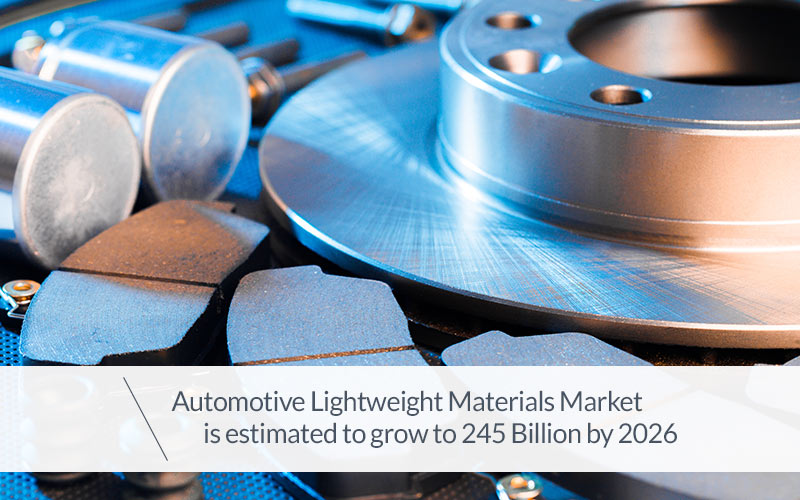Automotive lightweight materials market is estimated to grow to 245 billion by 2026

The automotive lightweight materials market keeps growing: its size surpassed 184.9 billion dollars in 2019 and it is estimated that it will grow to have a CAGR of over 8.2% from 2020 to 2026, reaching 245 billion dollars.
This upward trend, associated with the growth in the electric and hybrid vehicles industry (estimated to reach a CAGR of 25% for 2026), should create many opportunities for the automotive sector, at least partially capable of offsetting the reduction of new vehicles registration experienced in the last few years on a worldwide level.
The report published in December 2020 by Global Market Insight goes deeper in explaining the details of this forecasted growth.

Reducing vehicle weight to reduce toxic emissions
Compliance with increasingly strict vehicle emissions restrictions, and the progresses being made in electric cars design, require a never-seen usage level of light materials in the production of new vehicles.
For example, European regulations authorities are working on reaching 95g of CO2 emissions per km, from the current 140g of CO2 for every vehicle.
Also in the USA the Corporate Average Fuel Economy (CAFÉ) standard - set up by NHTSA (National Highway Traffic Safety Administration) to regulate the efficiency of cars, light commercial vehicles and heavy vehicles consumption - forecast reaching and maintaining a standard of 55.2 miles per American gallon (mpg) in 2025.
Therefore, vehicle manufacturers will need to employ lightweight materials to reduce vehicles weight, ensuring lower energy consumption.
It’s not simply by chance that the automotive lightweight materials market in North America, will expand to a CAGR of 8.5% between 2020 and 2026, and also that in this area the sale of electric cars grew by 10% in 2019 compared to 2018.
Reducing the weight of vehicles by 50% using lightweight materials
In 2019, year of the report analysis, the chassis segment held on to over 20% of market share.
Indeed, substituting the chassis’ iron and steel parts with lightweight materials, such as high strength steel, aluminium alloys, magnesium alloys and polymeric composites, could reduce the weight of the vehicle body by up to 50%.
This in turn means a net fall in fuel consumption for vehicles.
The GMI report recounts that a reduction of 10% in vehicle weight can cause an improvement in fuel savings between 7% and 8%.
At an even more detailed level, a reduction of just 1 kg in vehicle weight translates to a reduction of approximately 20% of CO2 output over the lifetime of the vehicle.
And we need to also consider another advantage brought about by the use of lightweight materials: the reduction in vibrations and noise.
These goals pose huge challenges for the automotive industry, and are being welcomed with strong signs of commitment.
So, over and above a reduction in toxic emissions, halving or anyhow reducing vehicle weight brings about a direct advantage in terms of cost to the consumers. They will be able to cover the same number of kilometres whilst using less fuel, without renouncing safety or vehicle robustness.
The role of aluminium in the process
The light material which will experience the highest rate of growth is aluminium, and it will equal 7% by 2026.
It is well known that, as of now, aluminium offers a better cost/benefit relationship compared to any other lightweight material substitute.
Indeed, the combination of the low costs, high strength and wide production capacity, make aluminium the lightweight material with the greatest potential in the automotive market.
For this very reason, we will see the average aluminium usage in vehicles in constant growth over the coming years, as has already happened in the recent past.



